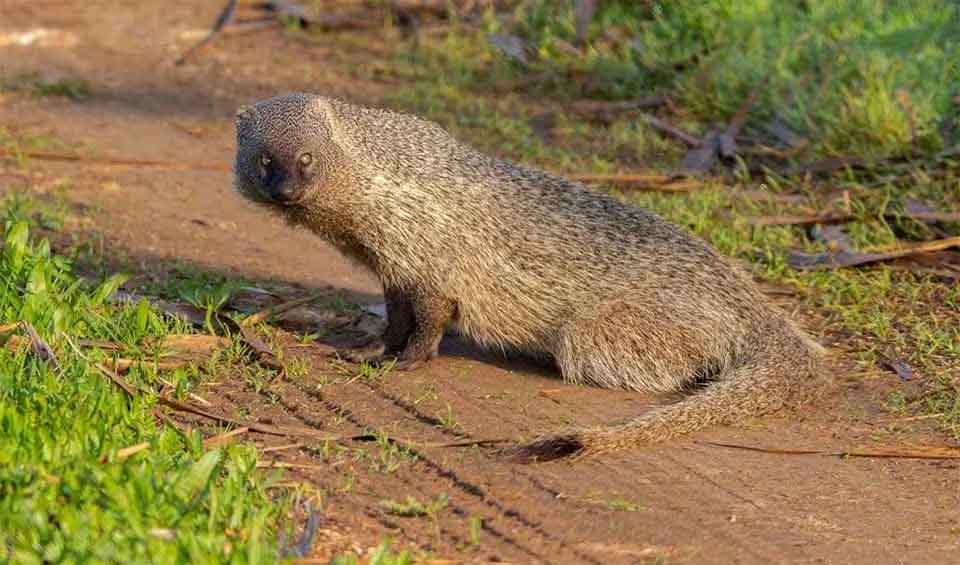Herpestes – Slender mongooses
Mongooses might stand effortlessly on their hind limbs while holding items of their choice in their hands
Characterized by its lithe and agile form, it stands as one of Africa’s most intriguing small carnivores. This genus comprises several species, each adapting uniquely to the diverse landscapes of the continent, from dense forests to arid savannas. The slender mongoose, with its short legs, small ears, pointed nose, and notably long, bushy tail, embodies the quintessential traits of resilience and adaptability.
Their fur varies significantly across its range, presenting in various shades of gray and brown, often intermixed with lighter gray flecks that provide camouflage within their natural habitats. Such color variations are not just for aesthetics; they play a crucial role in the mongoose’s survival, enabling it to blend into the underbrush and avoid predators. Additionally, distinctive markings on their legs and tails are not only key identifiers among species but also serve as visual cues for communication with other mongooses.
Slender mongooses are primarily carnivorous, feeding on a diet that includes insects, small mammals, birds, reptiles, and occasionally fruits and eggs. Their reputation as adept snake hunters is well-earned; they exhibit remarkable agility and resilience when tackling venomous snakes, employing a combination of speed, agility, and tactical maneuvering to evade bites. This ability is underpinned by a degree of resistance to snake venom, making them invaluable in controlling snake populations in their ecosystems.
Beyond their role as snake predators, slender mongooses significantly contribute to the ecological balance by managing populations of various small animals and insects. Their foraging habits help in seed dispersal and soil aeration, further underscoring their importance in maintaining ecosystem health.
Species in this genus
Common slender mongoose
Can take on a cobra with nothing but speed and confidence
Egyptian mongoose
Appeared in Egyptian paintings from 300 B.C., it is known as “Pharaoh’s cat” and is considered a holy animal that is housed in temples



